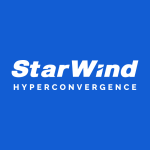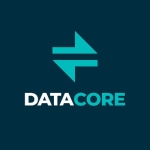What is most valuable?
We are running a training lab environment with ever changing setup and, therefore, iSCSI is the most flexible solution to provide storage to any point inside our datacenter. HP StoreVirtual is a scale-out, clustered iSCSI storage solution with High-Availability features packed into the base license.
The HP StoreVirtual VSA (Virtual Storage Appliance) allows us to turn any storage supported by our ESX server (local, FC SAN, shared SAS) into a flexible and highly-available iSCI storage.
There are numerous features in the product, some not even used by us. The ones we like most are thin provisioning and network RAID (node-to-node replication of data to satisfy different availability needs). With the latest Lefthand OS releases, we also started to use the adaptive optimization feature (automated block-level tiering) to leverage capacity of traditional spindle-driven hard disks, and the speed and responsiveness of SSDs.
How has it helped my organization?
In the past, we were exclusively Fibre-Channel focused with all the associated disadvantages of running a separate FC SAN with particular array types. Every host we wanted to connect to shared storage had to have an HBA installed.
With iSCI and the clustered StoreVirtual approach, we can now use standard IP networking, standard ethernet NIC, and we can easily provide storage to any server anywhere in our datacenter.
If we need more capacity or performance we simply add additional VSA nodes, which my be backed by internal server disk storage as it's cheaper than the legacy array storage.
What needs improvement?
From my perspective, these things are missing:
- Homogeneous management of 3PAR, StoreVirtual and MSA
- Remote Copy (sync or at least async) to/from StoreVirtual (similar to online import from EVA, EMC, etc., just expanded to continuously copying)
- Integration of Priority Optimization with VMware vSphere and vVols on the VM level straight from the vSphere web client
- StoreServ iSCI VSA
For how long have I used the solution?
We've used HP StoreVirtual for about 10 years now, but, honestly, I don't even remember anymore. We do not see any downtime due to the clustered approach, and migration and updates worked smoothly. Especially with the VSA, the hardware (server and storage backend) underneath simply get swapped without affecting availability.
Buyer's Guide
HPE StoreVirtual
September 2025
Learn what your peers think about HPE StoreVirtual. Get advice and tips from experienced pros sharing their opinions. Updated: September 2025.
867,676 professionals have used our research since 2012.
What was my experience with deployment of the solution?
We've had no issues with the deployment.
What do I think about the stability of the solution?
There have been no issues with the stability.
What do I think about the scalability of the solution?
We've had no issues scaling it for our needs.
How are customer service and support?
We rarely use technical support as the solution is software driven and very stable. We are very experienced with this solution, and if you have a support call, it is like gambling (as with every vendor). It depends if the level-one or level-two engineer is experienced or not, is located in your country or near-shored. Essentially, it's a mixed-skill experience, but we've had no bad experiences in general.
Which solution did I use previously and why did I switch?
We used HP's Enterprise Virtual Array and EMC's CX3 and CX4 arrays (and still use some of this hardware as pure capacity behind HP StoreVirtual). We went for StoreVirtual at that time as StoreVirtual provided much more functionality (and based on an all-inclusive pricing) than our existing storage arrays.
How was the initial setup?
The initial setup of both hardware-based StoreVirtual as well as the VSA are absolutely straightforward. OK, we were trained and experienced already, so there was no big challenge. However, there are still quite a lot of things you need to understand (especially in VMware environments) which can cause performance or availability issues if you don't follow certain (sometimes not clearly communicated) best practices.
But if you do everything right, you'll have a highly-stable, highly-available, and well-performing platform. We put all basics and learnings together and created our own two-day training (also available as video training) to teach admins and implementers how to do the important things right.
What about the implementation team?
We implemented it ourselves as we are architects and consultants. This the best way to learn and gain experience.
What was our ROI?
We never calculated the ROI. For us, it was just about having a stable, modern, feature-rich platform for our use cases.
What's my experience with pricing, setup cost, and licensing?
From a licensing perspective, the all-inclusive licensing was very appealing, as EVA and CX had lots of licensing options and add-ons, which was awful.
What other advice do I have?
Specify the workloads (availability, size, and performance). Either use the StorageWorks sizing tool (not available to everyone) or the advice of an experienced consultant/reseller to select the model and size the cluster and follow the best practices on implementation.
Disclosure: My company has a business relationship with this vendor other than being a customer. We have a business relationship with HP being technical instructors for Microsoft, VMware, HP server and storage solutions. We also have similar business relationships with EMC, VMware, Dell, Veeam and Cisco.










